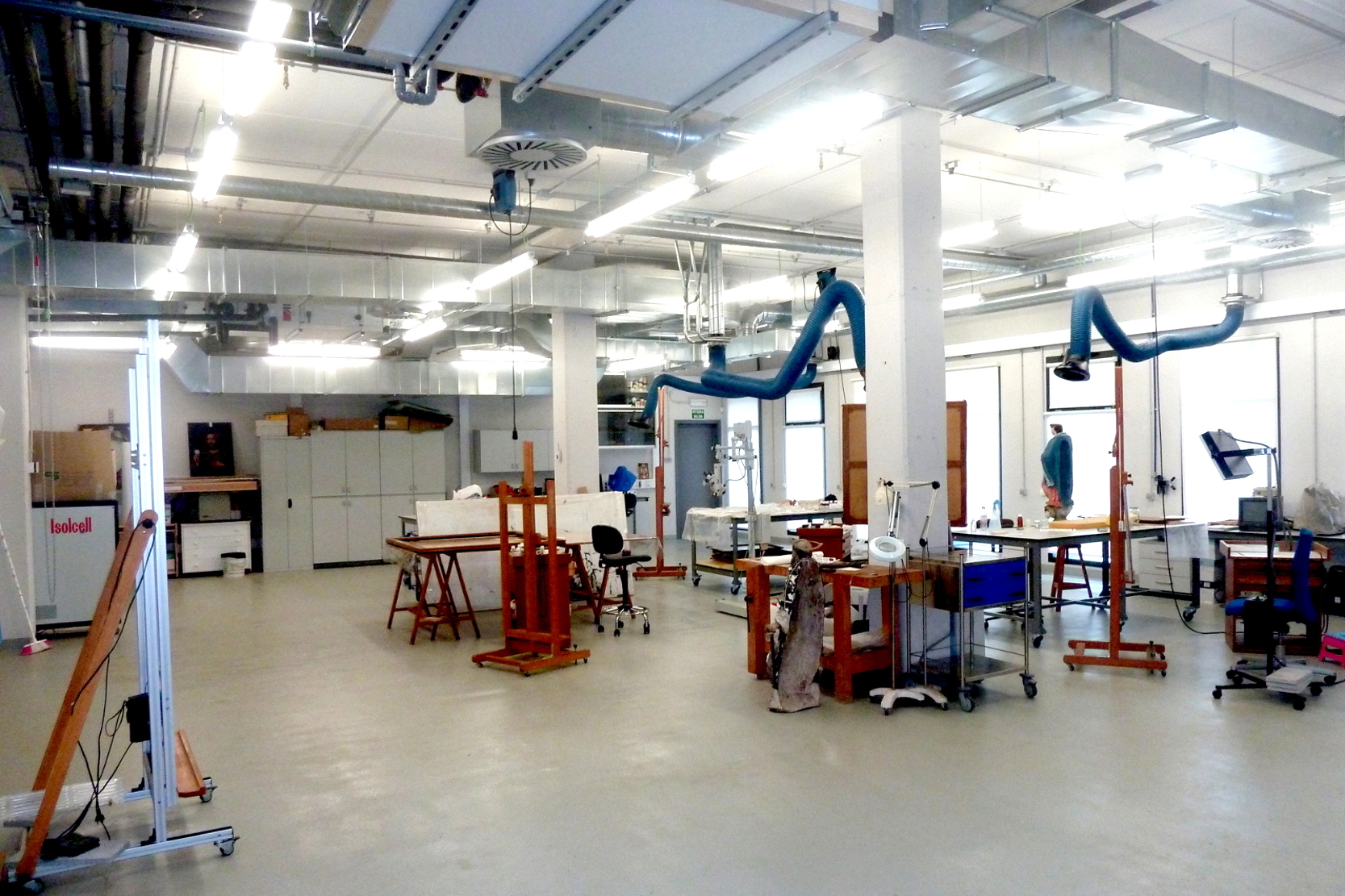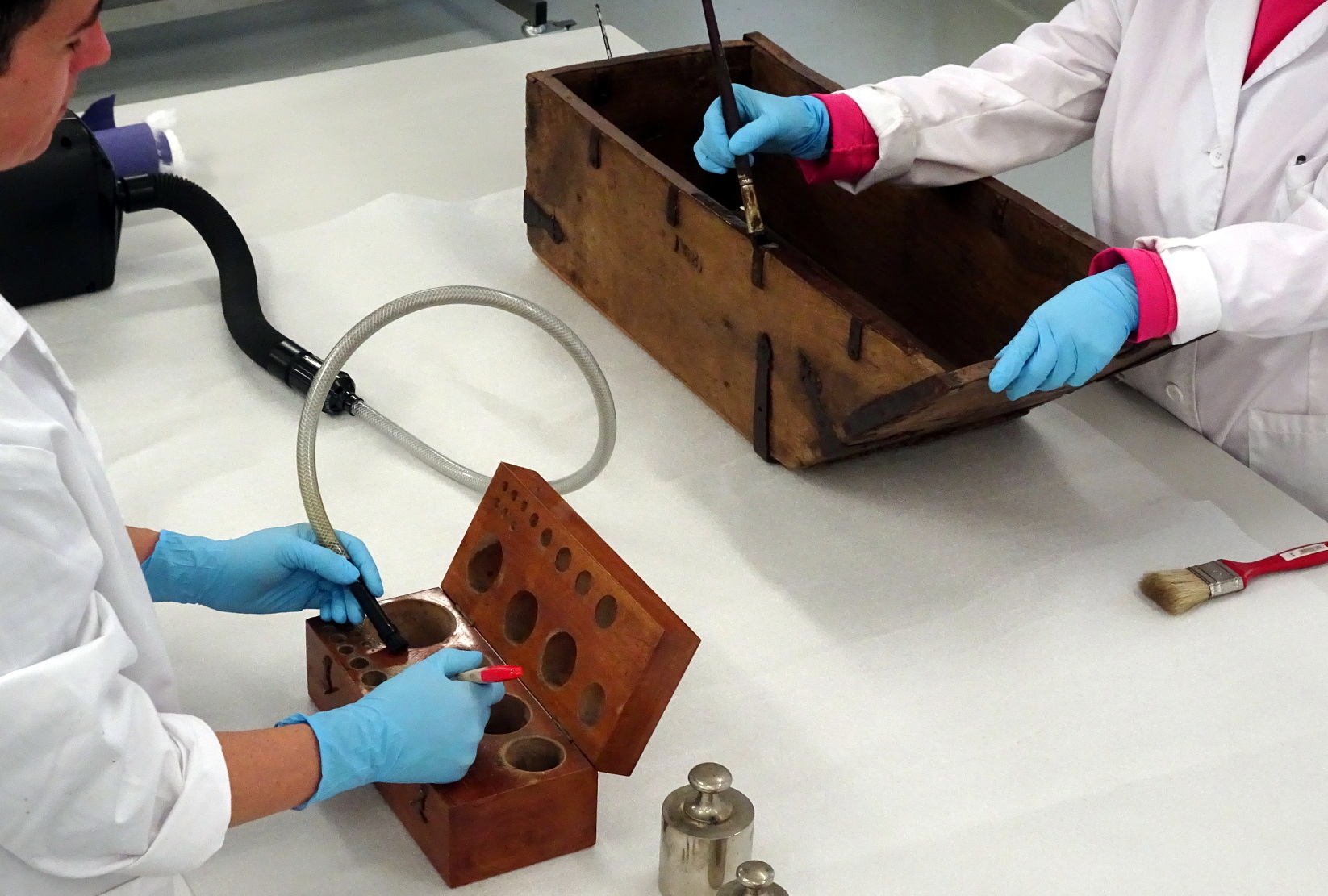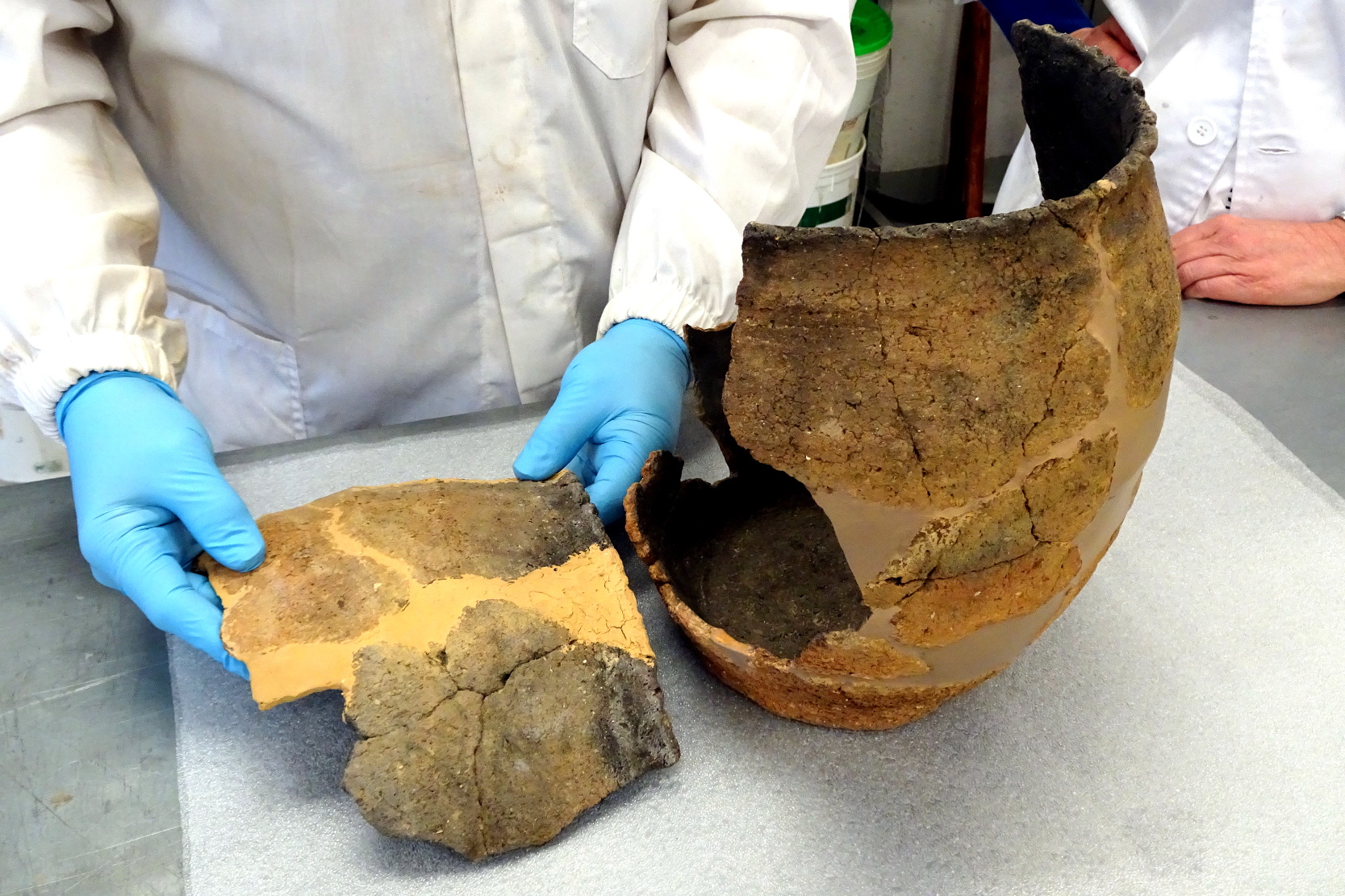The conservation department at Gordailua carries out a range of work. It is in charge of supervising the centre's conservation work. This aspect includes controlling climate conditions, coordinating comprehensive pest control and drawing up an emergency plan for the collections. The centre also carries out restoration work on the items, some of which are in a poor state of repair. Several different areas have been fitted out for cleaning, preparation, conditioning, conservation and restoration. Before any intervention, the items are studied and analysed to determine the material, technique and state of conservation, and the best treatment is decided upon accordingly.
The conservation department also supervises, monitors and works on portable cultural items from the provincial collections held at other sites, as well as any other important items of Gipuzkoa's heritage that the corresponding committees may decide on.
Safe and suitable work areas are provided in the restoration workshops. An air-regenerating infrastructure absorbs dust and toxic fumes and there are inlets for compressed air. The workships are fitted with specific machinery for their tasks.
Here, the works of art are examined and analysed before intervention. Work may include preventative conservation to ensure the physical integrity of the items (conditioning, protection systems, etc.); curative conservation to halt deterioration (removal of deformations, fixing, reinforcement, gluing and surface cleaning, etc.); and restoration, designed to restore the original appearance of the work (cleaning, retouching, varnishing, etc.).
Ethnography restoration workshop
All newly acquired ethnographic items and others that have been out on temporary loan in exhibitions that include organic elements undergo insect eradication treatment using nitrogen anoxia. This prevents contamination of other pieces at the centre.
Prior to storage, surface cleaning is carried out to remove deposits of dust, soil, organic remains, spores, etc.
Complete restoration is only carried out where the state of conservation requires and when the item in question is to be used in exhibitions or studies.
Archaeology and palaeontology restoration workshop
The archaeology and palaeontology restoration workshop concentrates mainly on items found in excavations in Gipuzkoa. It treats pieces of varying composition and state of conservation, including organic (wood, leather, cloth or bone) and inorganic (iron, copper alloys, ceramics, stone, etc.) items.
There are a number of work areas for dealing with objects of different types and sizes. The main workshop handles small to medium paleo-archaeological pieces. Another area is fitted with different-sized tanks for desalinating and cleaning medium to large items recovered from underwater sites.
The workshop has all the infrastructure necessary for consolidation, freeze-drying and conservation of waterlogged organic items. Medium to large metal objects are cleaned using electrolysis.


